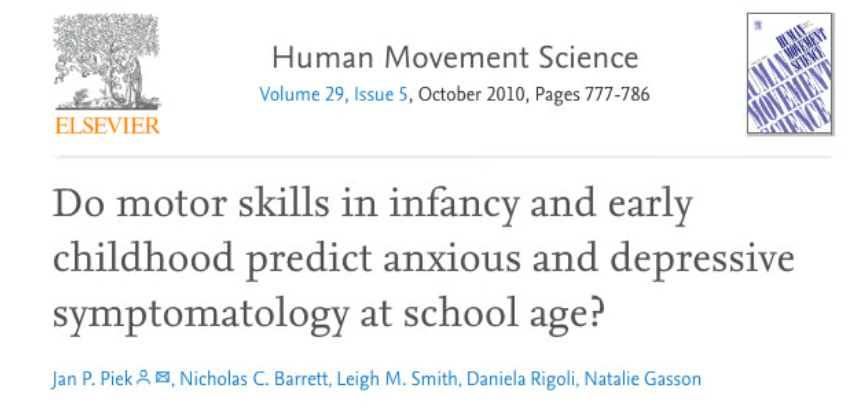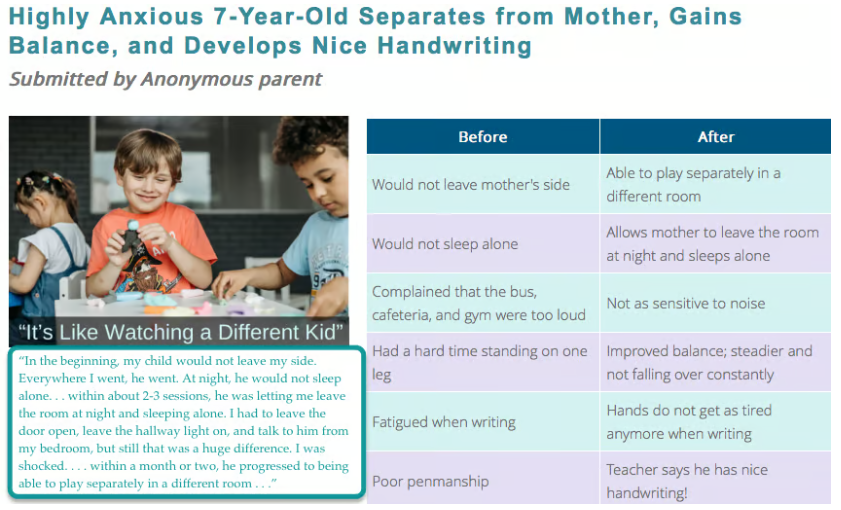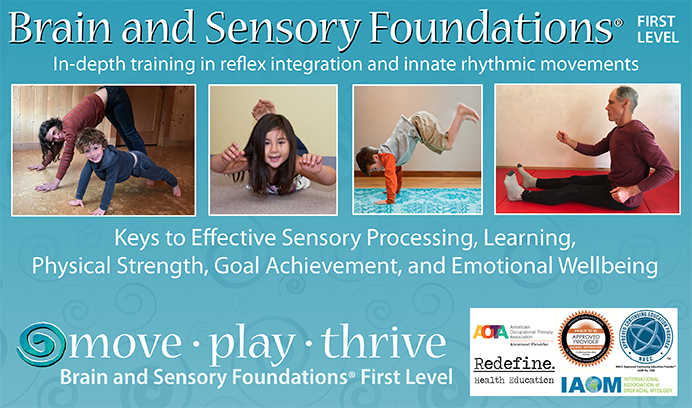For more information about innate movements, subscribe to our free monthly newsletter!
Greetings ,
I am excited to share with you some thoughts about the connection between anxiety, sensory issues, and retained primitive reflexes. Though these may seem like separate topics, they often go together.
For example, have you noticed that sensory disorders and anxiety often co-occur in the same individual? One sensory system that is commonly challenged in cases of anxiety is the balance system. Since the balance system relies on movements to develop properly, is it possible that using movements to improve balance can also help reduce anxiety? That was the exact finding of Bart et al. (2009) who studied a group of children with anxiety. Bart et al., (2009) used a sensory-motor intervention for improving balance, which had the effect of lowering the children’s anxiety and boosting their self- esteem.
Something similar happens in animals too. Shefer et al., (2015) studied anxious behavior in mice. They found that balance deficits were associated with greater anxiety, and that balance training diminished the anxious behavior. Whether human or animal, better balance and less anxiety could lead to better social, emotional, and learning skills. The case study below illustrates massive transformation as balance improves. This 7 year old boy was so anxious he would not let his mother out of his sight and he refused to sleep alone. Notice how as his balance improves, anxiety is greatly reduced, and academic skills improve--all from using the tools from the Brain and Sensory Foundations program.
I look forward to supporting you with these highly transformative tools. See more visuals below on the sensory-reflex-anxiety connection. And please share this with friends!
With appreciation and best wishes to you!
Sonia
 Sensory processing disorders (SPD) impact how individuals respond to daily events and often co-occur with other challenges such as emotional dysregulation and anxiety (McMahon et al., 2019), and social impairments (Thye et al., 2018).
Sensory processing disorders (SPD) impact how individuals respond to daily events and often co-occur with other challenges such as emotional dysregulation and anxiety (McMahon et al., 2019), and social impairments (Thye et al., 2018).

Gross motor performance in infancy and early childhood was predictive of the levels of anxious and depressive symptomatology for children between the ages of 6 to 12 years (Piek et al., 2010). Better movement abilities in infancy are determined by innate rhythmic and reflex movements. With better movement skills in infancy and toddlerhood, there is a lower risk of anxiety and depression at school-age. What do we do when a child is already past the infant and toddler stages? Thankfully, innate movements work for all ages to build and mature the brain, body, and sensory systems. See examples of how innate movements can help reduce and eliminate sensory disorders and anxiety.
References
Bart, O., Bar-Haim, Y., Weizman, E., Levin, M., Sadeh, A., & Mintz, M. (2009). Balance treatment ameliorates anxiety and increases self-esteem in children with comorbid anxiety and balance disorder. Research in Developmental Disabilities, 30(3), 486-495.
McMahon, K., Anand, D., Morris-Jones, M., & Rosenthal, M. Z. (2019). A path from childhood sensory processing disorder to anxiety disorders: The mediating role of emotion dysregulation and adult sensory processing disorder symptoms. Frontiers in Integrative Neuroscience, 22.
Pecuch, A., Gieysztor, E., Telenga, M., Wolańska, E., Kowal, M., & Paprocka-Borowicz, M. (2020). Primitive reflex activity in relation to the sensory profile in healthy preschool children. International Journal of Environmental Research and Public Health, 17(21).
Piek, J. P., Barrett, N. C., Smith, L. M., Rigoli, D., & Gasson, N. (2010). Do motor skills in infancy and early childhood predict anxious and depressive symptomatology at school age? Human Movement Science, 29(5), 777-786.
Shefer, S., Gordon, C., Avraham, K. B., & Mintz, M. (2015). Balance deficit enhances anxiety and balance training decreases anxiety in vestibular mutant mice. Behavioural Brain Research, 276, 76-83.
Thye, M. D., Bednarz, H. M., Herringshaw, A. J., Sartin, E. B., & Kana, R. K. (2018). The impact of atypical sensory processing on social impairments in autism spectrum disorder. Developmental Cognitive Neuroscience, 29, 151-167.
Be empowered with the Brain and Sensory Foundations program.
Train the Brain for Functional Gain!

